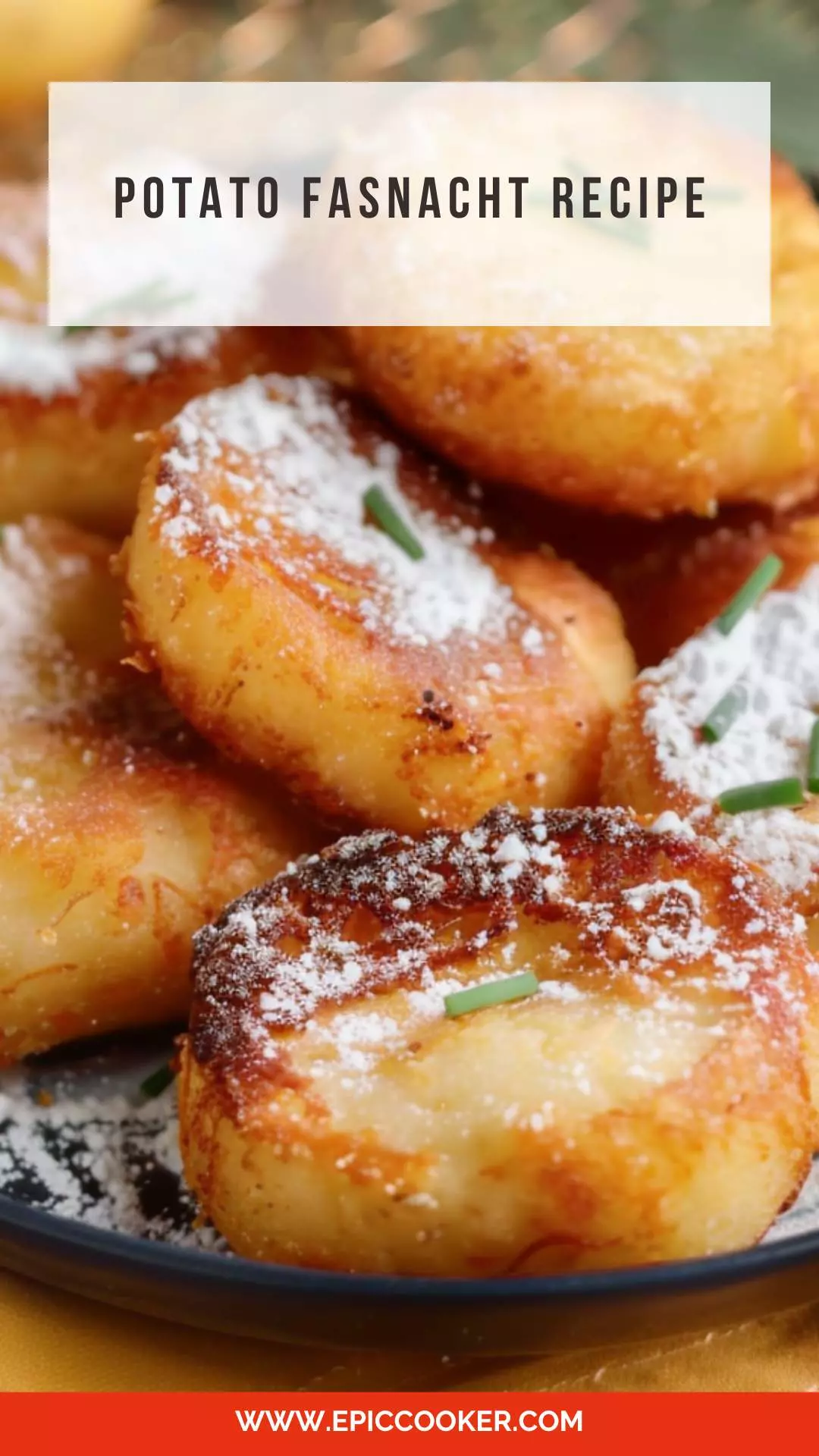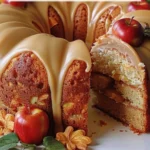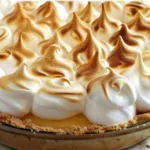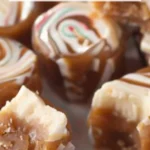Allow me to take you on a gastronomic adventure that delves deep into the heart of a time-honored culinary tradition – the beloved potato fasnacht.
Originating from European roots, this exquisite delicacy has captured the hearts and palates of food enthusiasts worldwide. Join me as we uncover the secrets behind this delectable treat and learn how to recreate it in your own kitchen.
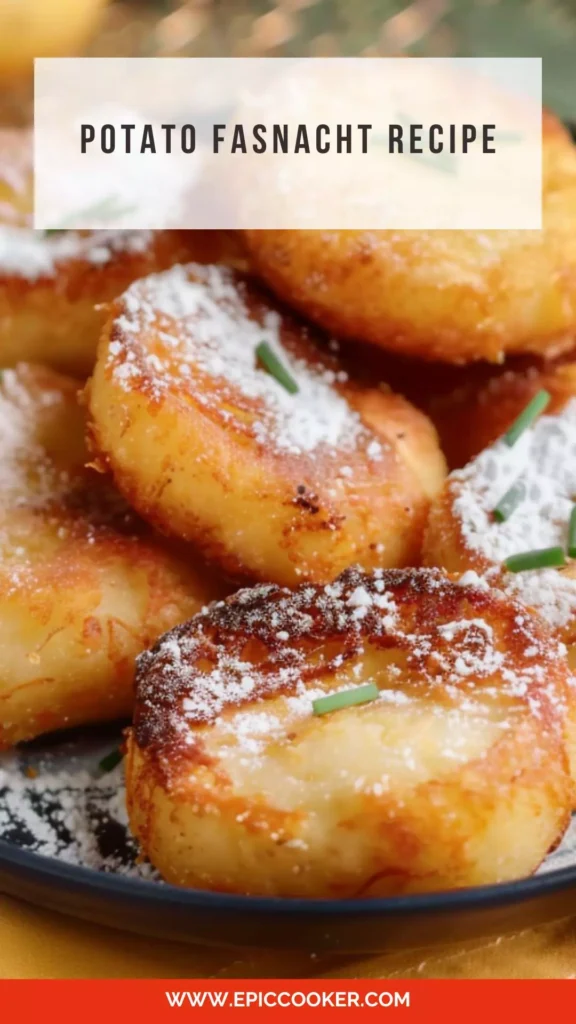
What is Potato Fasnacht?
Potato fasnacht, a delightful pastry, is a cherished recipe that has been passed down through generations. This delectable confection is made with a combination of hot mashed potatoes, yeast, sugar, flour, and a touch of love.
The dough is carefully crafted to achieve a perfect balance of lightness and richness, resulting in a heavenly treat that will leave you craving for more.
Why This Recipe Works?
1. The Use of Hot Mashed Potatoes: The inclusion of hot mashed potatoes in the dough adds a unique moistness and depth of flavor that sets potato fasnacht apart from other pastries.
2. Incorporation of Yeast: The addition of yeast helps the dough rise beautifully, creating a light and airy texture that is a delight to bite into.
3. Balanced Sweetness: By incorporating just the right amount of granulated sugar, the potato fasnacht achieves a perfect balance of sweetness that complements the savory notes of the potatoes.
4. Tradition Meets Innovation: While staying true to its traditional roots, this recipe also allows for creativity, making it a versatile and customizable treat for all occasions.
You’ll also like the following Dessert recipes!
- Del Monte Fruit Cocktail Cake Copycat Recipe
- Original Vanishing Oatmeal Cookie
- How to make Magic Candy
Ingredients You’ll Need:
- Yeast: Yeast serves as the leavening agent in the dough. It interacts with the warm water and sugar to activate and produce carbon dioxide gas, which helps the dough rise and become light and airy.
- Warm water: Warm water activates the yeast and helps it dissolve into the dough. It also hydrates the other ingredients and promotes gluten formation, resulting in a stretchy and elastic dough.
- Sugar: Sugar provides food for the yeast, aiding in fermentation and gas production. It also adds sweetness to the dough, enhancing its flavor.
- Hot mashed potatoes: Hot mashed potatoes add moisture, flavor, and texture to the dough. They contribute to the softness and tenderness of the Fasnacht while also imparting a subtle potato flavor.
- Granulated sugar: Granulated sugar sweetens the dough and adds richness to the flavor. It also aids in browning during baking, giving the Fasnacht a golden color.
- Water (lukewarm), used for boiling potatoes: Lukewarm water is used to boil the potatoes before mashing. This step helps soften the potatoes and makes them easier to incorporate into the dough.
- All-purpose flour: All-purpose flour forms the base of the dough. It provides structure and volume to the Fasnacht, helping it rise and hold its shape during frying.
- Salt: Salt enhances the flavor of the dough and regulates the activity of the yeast. It also strengthens the gluten in the dough, improving its texture and structure.
- Unsalted butter: Unsalted butter adds richness and flavor to the dough. It helps tenderize the crumb and creates a soft and moist texture in the finished Fasnacht.
- Additional sugar: Additional sugar is used to sweeten the dough further, contributing to its flavor and creating a slightly sweet taste.
- Lukewarm water or milk: Lukewarm water or milk is added to the dough to adjust its consistency and hydration. It helps create a smooth and elastic dough that is easy to work with.
- Additional melted butter: Additional melted butter is brushed onto the Fasnacht after frying. This step adds richness and shine to the exterior of the Fasnacht, enhancing its appearance and flavor.
- Eggs, beaten: Beaten eggs enrich the dough and contribute to its structure. They add moisture and richness to the Fasnacht, making it tender and flavorful.
- Additional sifted flour: Additional sifted flour is used as needed to adjust the consistency of the dough. It helps prevent the dough from being too sticky and ensures it can be rolled out and shaped easily.
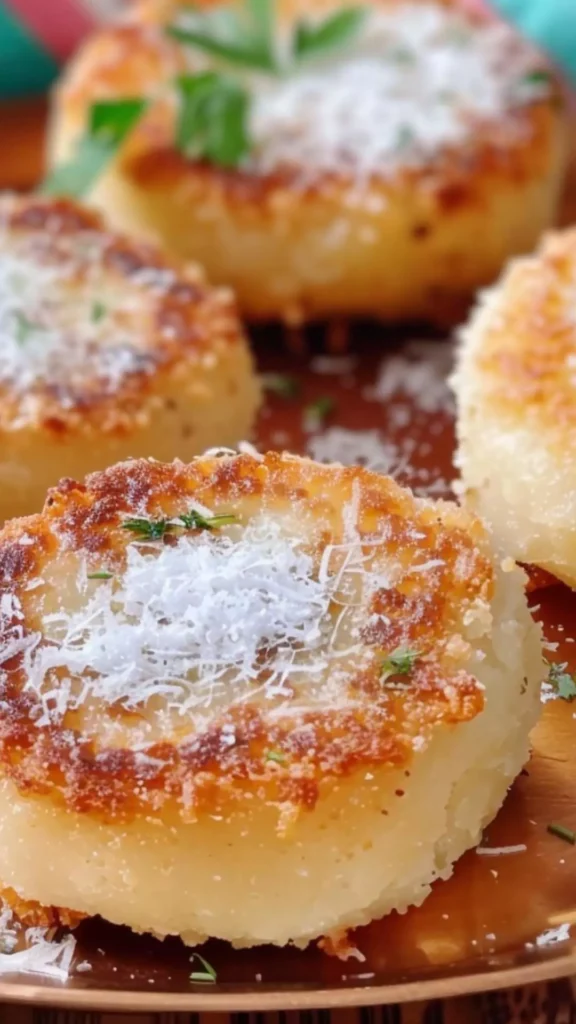
Step by Step Directions:
Step 1: Activate the Yeast
Begin by activating the yeast. In a small bowl, dissolve the yeast in warm water along with a teaspoon of sugar. Stir gently to combine and let it sit for a few minutes until the yeast becomes frothy and bubbly.
Step 2: Prepare the Potato Dough
In a large mixing bowl, combine the hot mashed potatoes, sugar, potato water, and flour. Mix well until all the ingredients are fully incorporated. Then, add the activated yeast mixture to the bowl and stir until everything is evenly distributed.
Step 3: First Rise
Cover the bowl with a clean kitchen towel and place it in a warm, draft-free area to rise for several hours. Allow the dough to double in size. This initial rise is essential for developing flavor and texture in the fastnachts.
Step 4: Add Remaining Ingredients
Once the dough has risen, add the remaining sugar, lukewarm milk, melted butter, beaten eggs, and salt to the bowl. Mix everything together thoroughly until a sticky dough forms. Gradually add sifted flour until the dough comes together and is stiff enough to handle.
Step 5: Knead the Dough
Turn the dough out onto a well-floured surface and knead it for about 3 to 5 minutes, or until it becomes smooth and elastic. If the dough is too sticky, incorporate a small amount of extra flour as needed to prevent it from sticking to your hands.
Step 6: Second Rise
Grease a large bowl with unsalted butter or oil and place the kneaded dough inside. Cover the bowl with a clean kitchen towel and let the dough rise in a warm, draft-free place for about 2 hours, or until it doubles in size again.
Step 7: Shape the Fastnachts
After the second rise, divide the dough into thirds. Roll out each portion of dough on a floured surface to a thickness of about 3/4 inch. Using a knife, cut the dough into diamond shapes, which are traditional for fastnachts. Make sure to cut a slit across the top of each fastnacht with a sharp knife.
Step 8: Final Rise
Place the shaped fastnachts on a baking sheet lined with parchment paper, leaving some space between each one. Cover them loosely with a clean kitchen towel and let them rise again in a warm place until they become springy to the touch and appear puffy.
Step 9: Fry or Bake the Fastnachts
Once the fastnachts have risen, heat oil in a deep fryer or skillet to 375°F. Carefully drop the risen fastnachts into the hot oil, raised side down, and fry them until they are golden brown on both sides. Alternatively, you can bake them in a preheated oven as rolls.
Step 10: Enjoy
Once fried or baked, remove the fastnachts from the oil or oven and let them cool slightly on a wire rack. Serve them warm and enjoy the delicious potato fastnachts as a delightful treat!
Tips & Tricks:
1. Temperature Matters: Ensure that the water or milk used in the recipe is at the right temperature to activate the yeast effectively.
2. Don’t Rush the Rising: Let the dough rise undisturbed in a warm place to allow for optimal texture and flavor development.
3. Consistent Kneading: Proper kneading is key to achieving a smooth and elastic dough that results in light and airy fasnacht.
4. Maintain Oil Temperature: Fry the fasnacht in oil at a consistent temperature to achieve a crispy exterior and fluffy interior.
5. Customize Flavors: Experiment with different fillings or toppings to create unique variations of the classic potato fasnacht.
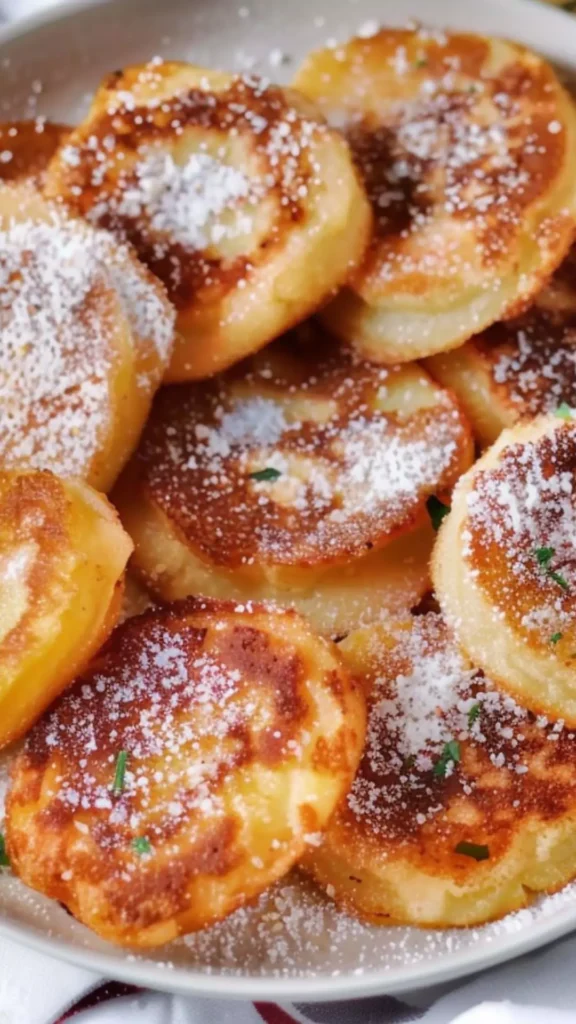
Nutrition Information:
– Calories: 301 Kcal
– Total Fat: 15g
– Cholesterol: 35mg
– Sodium: 90mg
– Total Carbohydrates: 65g
– Protein: 3g
How Do You Store The Leftovers?
To store leftover potato fasnacht, allow them to cool completely before transferring them to an airtight container. You can refrigerate them for up to 2-3 days or freeze them for longer shelf life. Reheat the fasnacht in an oven or toaster oven to retain their crispy texture.
What Sides Would Complement Potato Fasnacht?
1. Fresh Fruit Salad: The lightness of a fruit salad makes it a refreshing accompaniment to the rich flavors of potato fasnacht.
2. Whipped Cream and Berries: Indulge in a dollop of whipped cream and a handful of fresh berries for a delightful contrast of textures and flavors.
3. Savory Dip: Pair potato fasnacht with a tangy yogurt dip or savory sauce for a savory twist that enhances its taste profile.
What Alternatives Can You Use for the Ingredients If They Are Not Present in Your Kitchen?
1. Instant Yeast: If you don’t have yeast on hand, instant yeast can be used as a quick alternative for leavening the dough.
2. Sweet Potatoes: For a unique twist, swap out regular mashed potatoes with sweet potatoes for a subtly sweet and vibrant color variation.
3. Whole Wheat Flour: If you prefer a nuttier flavor and added fiber, replace some of the all-purpose flour with whole wheat flour in the dough.
4. Honey or Maple Syrup: Substitute granulated sugar with honey or maple syrup for a natural sweetness that complements the earthy notes of the potatoes.
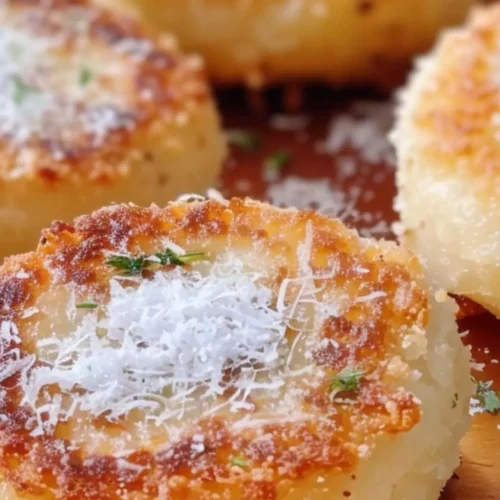
Potato Fasnacht Recipe
Equipment
- Small bowl
- Large mixing bowl
- Clean kitchen towel
- Flour for dusting
- Baking sheet
- parchment paper
- Deep fryer or skillet (if frying)
- Wire rack (for cooling)
Ingredients
- 1 teaspoon granulated sugar
- 1 cup mashed potatoes
- 1/2 cup warm water with
- 1 packet yeast
- 1 cup all-purpose flour
- 2/3 cup melted unsalted butter 5 ounces,
- 1 cup sugar
- 1 cup water that the potatoes were boiled in (lukewarm)
- Salt
- 3/4 cup melted butter
- 3 eggs beaten
- 1 teaspoon salt
- 1 cup sugar
- 1 cup lukewarm milk
- 5 cups sifted flour for stiff dough
Instructions
- Begin by activating the yeast. In a small bowl, dissolve the yeast in warm water along with a teaspoon of sugar. Stir gently to combine and let it sit for a few minutes until the yeast becomes frothy and bubbly.
- In a large mixing bowl, combine the hot mashed potatoes, sugar, potato water, and flour. Mix well until all the ingredients are fully incorporated. Then, add the activated yeast mixture to the bowl and stir until everything is evenly distributed.
- Cover the bowl with a clean kitchen towel and place it in a warm, draft-free area to rise for several hours. Allow the dough to double in size. This initial rise is essential for developing flavor and texture in the fastnachts.
- Once the dough has risen, add the remaining sugar, lukewarm milk, melted butter, beaten eggs, and salt to the bowl. Mix everything together thoroughly until a sticky dough forms. Gradually add sifted flour until the dough comes together and is stiff enough to handle.
- Turn the dough out onto a well-floured surface and knead it for about 3 to 5 minutes, or until it becomes smooth and elastic. If the dough is too sticky, incorporate a small amount of extra flour as needed to prevent it from sticking to your hands.
- Grease a large bowl with unsalted butter or oil and place the kneaded dough inside. Cover the bowl with a clean kitchen towel and let the dough rise in a warm, draft-free place for about 2 hours, or until it doubles in size again.
- After the second rise, divide the dough into thirds. Roll out each portion of dough on a floured surface to a thickness of about 3/4 inch. Using a knife, cut the dough into diamond shapes, which are traditional for fastnachts. Make sure to cut a slit across the top of each fastnacht with a sharp knife.
- Place the shaped fastnachts on a baking sheet lined with parchment paper, leaving some space between each one. Cover them loosely with a clean kitchen towel and let them rise again in a warm place until they become springy to the touch and appear puffy.
- Once the fastnachts have risen, heat oil in a deep fryer or skillet to 375°F. Carefully drop the risen fastnachts into the hot oil, raised side down, and fry them until they are golden brown on both sides. Alternatively, you can bake them in a preheated oven as rolls.
- Once fried or baked, remove the fastnachts from the oil or oven and let them cool slightly on a wire rack. Serve them warm and enjoy the delicious potato fastnachts as a delightful treat!
Notes
- Temperature Matters: Ensure that the water or milk used in the recipe is at the right temperature to activate the yeast effectively.
- Don’t Rush the Rising: Let the dough rise undisturbed in a warm place to allow for optimal texture and flavor development.
- Consistent Kneading: Proper kneading is key to achieving a smooth and elastic dough that results in light and airy fasnacht.
- Maintain Oil Temperature: Fry the fasnacht in oil at a consistent temperature to achieve a crispy exterior and fluffy interior.
- Customize Flavors: Experiment with different fillings or toppings to create unique variations of the classic potato fasnacht.
Nutrition
Frequently Asked Questions:
1. Q: Can I make potato fasnacht ahead of time?
A: Yes, you can prepare the dough in advance and refrigerate it overnight. Allow the dough to come to room temperature before shaping and frying the fasnacht.
2. Q: Can I bake potato fasnacht instead of frying them?
A: While traditional potato fasnacht is deep-fried for a crispy exterior, you can opt to bake them in an oven at a high temperature for a healthier alternative.
3. Q: Are there gluten-free options for potato fasnacht?
A: You can experiment with gluten-free flour blends to create a suitable alternative for those with gluten sensitivities, ensuring a similar texture and taste.
4. Q: Can I add savory herbs or spices to potato fasnacht?
A: Absolutely! Customize your potato fasnacht by incorporating herbs like rosemary or spices like cinnamon to infuse unique flavors into the dough.
5. Q: Can I make mini versions of potato fasnacht for bite-sized treats?
A: To create mini potato fasnacht, simply divide the dough into smaller portions and fry them until golden brown. They make for perfect party appetizers or snacks.
6. Q: Can I experiment with different toppings for potato fasnacht?
A: Get creative with toppings such as powdered sugar, cinnamon-sugar, or even a drizzle of chocolate for a decadent finish that elevates the flavor profile of potato fasnacht.
Conclusion:
In conclusion, potato fasnacht is more than just a pastry – it is a culinary masterpiece that embodies tradition, innovation, and the joy of savoring simple pleasures. By immersing yourself in the process of creating this delightful treat, you embark on a sensory journey that transcends mere taste and texture.
So, gather your ingredients, embrace the art of dough-making, and indulge in the rich heritage of potato fasnacht with each delectable bite.
Let this recipe be a testament to the beauty of culinary exploration and the enduring legacy of cherished flavors that unite us across time and space.
You’ll also like these latest recipes!
- Moe’s Roasted Corn Pico Recipe With Avocado Copycat Recipe
- How to make Pillsbury Bread Flour
- Betty Crocker Potato Candy

